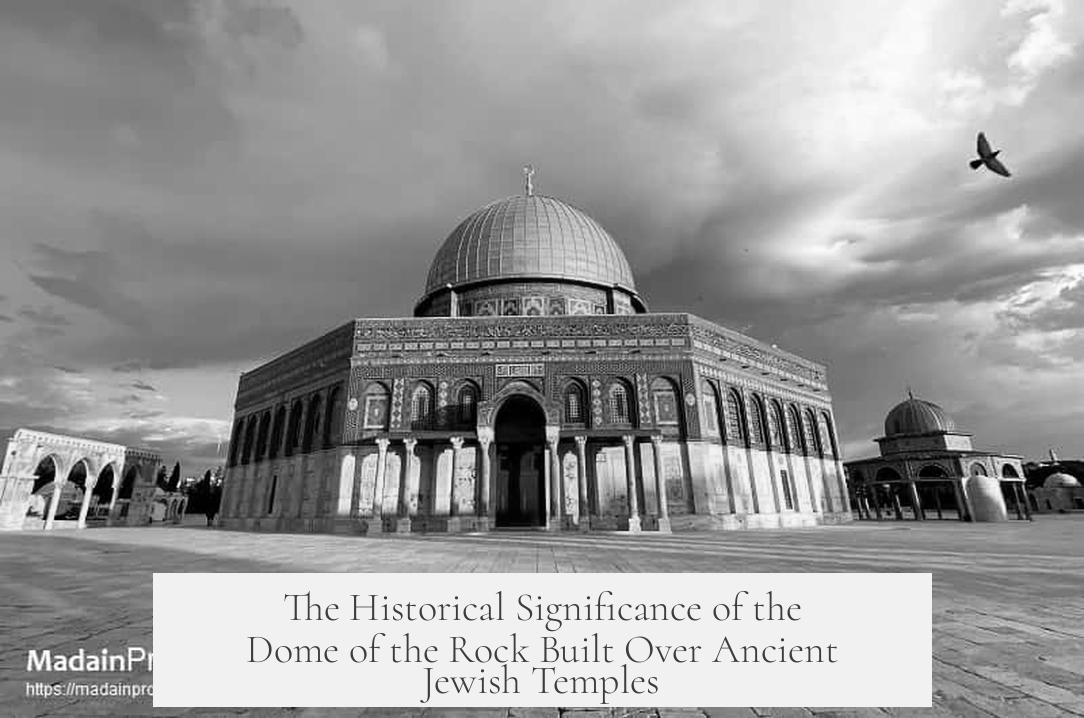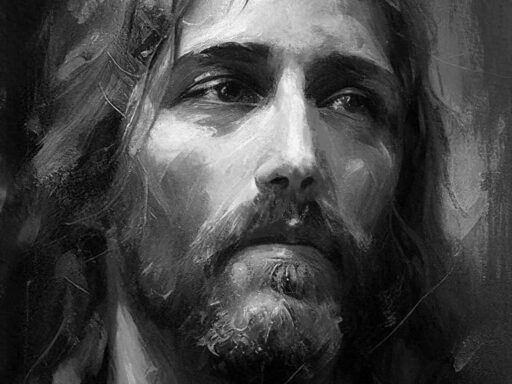The Dome of the Rock was built on the site of the Jewish Temples on the Temple Mount to establish Islamic religious and political authority over a place deeply sacred to both Judaism and Islam. This location, centered on the Foundation Stone, holds spiritual importance for both faiths. By erecting this shrine, Muslim rulers underscored their connection to the prophetic traditions and demonstrated their control over Jerusalem after conquest.
The site atop the Temple Mount is traditionally believed by many Jewish scholars to be the location of the Holy of Holies, the innermost and most sacred part of the First and Second Temples destroyed centuries earlier. The Foundation Stone, the ‘rock’ encased by the Dome, is likewise significant in Islamic belief. Many Muslims hold that the stone marks the point of creation or the place from which the Prophet Muhammad ascended to heaven during the Isra and Mi’raj night journey. This shared reverence makes the site one of profound interfaith importance.
At the time of Muslim conquest in the 7th century CE, the Temple Mount area was in ruins and neglected, reportedly filled with debris. The second Temple had been destroyed nearly six centuries earlier by the Romans, and Christian Byzantine authorities had not constructed significant religious buildings there. After capturing Jerusalem in 638 CE, Caliph Umar led efforts to clean the site and initially refrained from building large structures to avoid confusion over Muslim prayer direction. Muslims at first prayed facing Jerusalem before turning their qibla toward Mecca.
The Dome of the Rock itself was built at the end of the 7th century (around 691 CE) under Caliph Abd al-Malik. This was several decades after the Muslim conquest and served multiple purposes. It was an assertion of Muslim religious presence and political dominance in a city formerly sacred to Judaism and Christianity. The grand structure linked Islam’s spiritual narrative to Judaism’s ancient temple traditions by constructing it over the Foundation Stone believed to have housed the Holy of Holies.
The proximity of the Dome of the Rock to earlier Jewish holy sites symbolized a continuation—and transformation—of sacred history. Islamic tradition affirms the site’s holiness by associating it with Prophet Muhammad’s miraculous night journey. The shrine’s octagonal design and its golden dome cover an area much larger than the original Holy of Holies, emphasizing Muslim architectural and religious presence on the Temple Mount.
Following the Dome, the Al-Aqsa Mosque was built nearby in the early 8th century, further cementing Muslim religious infrastructure in Jerusalem. This mosque, known as ‘the Furthest Mosque,’ is also connected to Muhammad’s ascent to heaven, marking the entire compound as a locus of Islamic faith anchored on Judaism’s ancient sacred ground.
Jewish reaction to the Muslim construction was complex. By the 7th century, no formal Jewish worship had been allowed on the Temple Mount since the Roman destruction in the 2nd century CE. Orthodox Jewish tradition prohibits ascending the Temple Mount due to concerns about ritual impurity, especially since the exact location of the Holy of Holies is uncertain. While some Jews felt indignation at the Muslim shrine atop their holiest site, there was little recorded resistance at the time of construction.
In modern times, the Temple Mount remains a site of religious and political sensitivity. After the 1967 Six-Day War, Israel captured East Jerusalem, including the Temple Mount. However, it decided to leave the control of the site in the hands of the Muslim waqf (religious trust) administered by Jordan to maintain peace and respect religious sensitivities. This arrangement continues, with the waqf responsible for the maintenance of the Dome of the Rock and Al-Aqsa Mosque.
Orthodox Jewish belief holds that the Third Temple will be rebuilt only in the Messianic Era. This consensus arises from difficulties locating the precise Holy of Holies and the need for ritual purity, including the presence of a red heifer for purification rites. Some minority opinions advocate rebuilding as soon as possible, but mainstream Judaism considers current conditions religiously unsuitable. This adds layers of complexity to any claims or changes connected to the Dome of the Rock.
| Aspect | Details |
|---|---|
| Location | Built over the Foundation Stone on the Temple Mount, holiest site in Judaism and Islam |
| Religious Significance | Jewish Holy of Holies site and Islamic site of Prophet Muhammad’s night journey |
| Historical Context | Post-7th century Muslim conquest; site was previously in ruins |
| Political Purpose | Affirmation of Muslim control over Jerusalem after conquest |
| Jewish View | Orthodox reluctance to enter site; Messianic rebuilding awaited |
| Modern Custodianship | Under Jordanian waqf with Israeli sovereignty since 1967 |
- The Dome of the Rock marks Islamic religious and political authority on previously Jewish sacred ground.
- The shared sanctity of the Foundation Stone is key to its religious significance in both Judaism and Islam.
- Built decades after conquest, it symbolizes Muslim continuity with and dominance over earlier monotheistic traditions.
- Orthodox Jewish traditions currently discourage ascending the Temple Mount due to ritual purity laws and location uncertainty.
- Modern political arrangements maintain Muslim custodianship to preserve religious peace in a deeply contested site.




